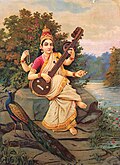| Festival name | 1st
yr
| Country | State | City | Notes |
|---|
| Harballabh Sangeet Sammelan | 1875 | India | Punjab | Jalandhar | Held every year in last week of December |
| Festival of Tabla | 2017 | USA | California | LA | Globally recognized landmark for percussive arts and Indian Classical Music. |
| Tansen Samaroh | 1950s | India | Madhya Pradesh | Gwalior | |
| Dover Lane Music Conference | 1952 | India | West Bengal | Kolkata | Held every year in January |
| Uttarpada Sangeet Chakra | 1955 | India | West Bengal | Uttarpara [4] | |
| Nadaneerajanam svbc tv | 2009 | India | Andhra Pradesh | Tirumala | Daily One and Half Hour live |
| Swami Haridas Sangeet Sammelan | 1952 | India | Maharashtra | Mumbai | |
| Sawai Gandharva Bhimsen Festival | 1953 | India | Maharashtra | Pune | Held every year in December |
|
| Surashree Kesarbai Kerkar Sangeet Samaroha (Goa) | 19?? | India | Goa | Panaji (Panjim) | Held every year in November |
| Ninaad Sangeet Mahotsav | 1965 | India | Uttar Pradesh | Agra | |
| Sabrang Utsav | 1968 | India | Delhi | | |
| ITC SRA Sangeet Sammelan | 1971 | India | Various | Various | |
| Pandit Motiram Pandit Maniram Sangeet Samaroh | 1972 | India | Telangana | Hyderabad | |
| Dumru Percussion Festival | 2011 | India | Maharashtra | Pune | |
| Saptak Festival of Music | 1980 | India | Gujarat | Ahmedabad | Held every year in January |
| Ganga Mahotsava | 1985 | India | Verius | Varanasi | |
| Pandit Chatur Lal Festival | 1990 | India | New Delhi | Delhi | |
| Virasat | 1995 | India | Various | Various | |
| Jahan-e-Khusrau | 2001 | India | Delhi | New Delhi | |
| Ruhaniyat – The All India Sufi & Mystic Music Festival | 2001 | India | Various | Mumbai/Various | |
| Sitar in Petersburg | 2008 | Russia | NW District | St. Petersburg | Focus on sitar |
| SwaraZankar Music Festival | 2009 | India | Maharashtra | Pune | |
| Citi-NCPA Aadi Anant Festival | 2010 | India | Maharashtra | Mumbai | |
| Mahindra Sanatkada Lucknow Festival | 2010 | India | Uttar Pradesh | Lucknow [5] | |
| Riwaayat | 2010 | India | Telangana | Hyderabad | |
| Chaturprahar | 2011 | India | Maharashtra | Mumbai | |
| Sawai Gandharva Bhimsen Festival, Hyderabad | 2012 | India | Telangana | Hyderabad | |
| 8 Prahar | 2014 | India | Maharashtra | Mumbai | Annual Event, last 10 November 2019 |
| Qutub Festival | | India | Delhi | New Delhi | |
| Giligundi Music Festival | | India | Karnataka | Giligundi, Near Sirsi | Held in May every year |
| Sangeet Martand Ustad Chand Khan Music Festival | 1992 | India | New Delhi | Delhi | |
| Gunidaas Sangeet Samaroh | | India | Maharashtra | Mumbai | |
| Karikan Parameshwari moonlight Sangeeta Festival | | India | Karnataka | Honnavar | |
| Kolkata International Dance Festival [6] | 2017 | India | West Bengal | Kolkata | |
| Nila Festival, Kerala Kalamandalam | 1986 | India | Kerala | Cheruthuruthy | |
| Tihai, Shatatantri Media | 2019 | USA | San Francisco | California | First held in 2014, 18–20 September, now held annually |
Sitar Ratna Rahimat Khan Sangeetotsav
| 1954 | India | Karnataka | Dharwad | Annual Event |
| Vasantotsav | 1985 | India | Maharashtra | Pune | |
| Darbar Festival | 2005 | UK | London | London | |

